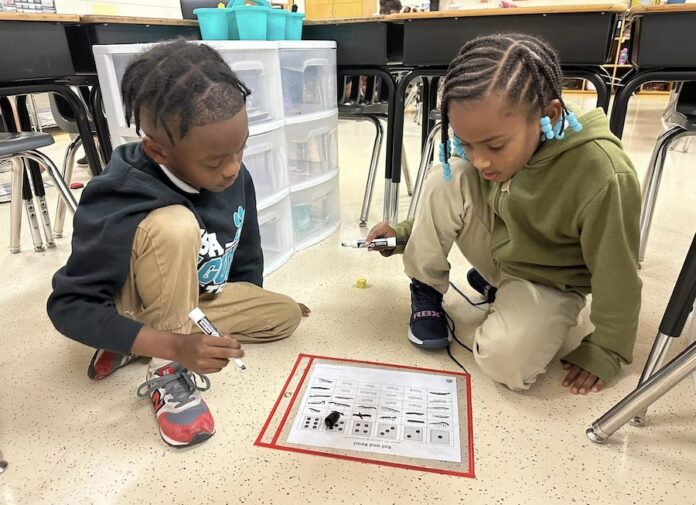A buddy system that pairs older and younger kids and “house” meetings are just two of the ways educators are accelerating learning at Juban Parc Elementary School in Louisiana.
Though Juban Parc has been one of the highest performers in Livingston Parish Public Schools, educators there are now helping dozens of new students who are struggling with basic concepts after the disruptions of remote learning. “If we do not form relationships and connections, it doesn’t matter how good we are as educators; the growth’s not going to be there,” Assistant Principal Brandy Melancon says. “Are we going to take them to their best level of achievement? Not if they don’t trust us.”
The buddy program pairs an older student with a younger student to participate in monthly STEM, art and other learning activities. The older kids can teach the younger ones things like how to log on to a computer, for example, which can help build both mentor and mentee self-confidence. The older students often become very invested in their young buddy’s success.
Under the house system, students remain in the same house while they are at Juban Parc, and the group competes for points that educators and staff can award for everything from showing responsibility and character to supporting the community to hard work on class assignments. “We don’t want to raise kids who are only great at academics,” Melancon adds. “We want them to be people who will be successful in life and the world.”
Juban Parc stretch growth
On the more purely academic side, students are rotated between teachers, for extra instruction and enrichment, based on their progress. Juban Parc uses the i-Ready adaptive math curriculum to tailor instruction to meet the needs of each student, whether they are brand new or have been attending the school for years. The platform not only meets students where they are but gives teachers ideas for interactive games and other activities that can serve as intervention or enrichment, math teacher Sarah McCrary adds.
7 questions: Why hiring teachers of color is personal for this principal
“It’s the reason our math stretch growth was so big last year, ” she explains. “It’s the mastery of teachers using resources more effectively and in a more targeted way. And as gaps close, students make connections to apply new learning.”
Educators in Rhode Island’s Bristol Warren Regional SD also use i-Ready to measure the stretch growth of students, specifically those who have not reached proficiency. “We want to close the gaps as quickly as possible,” Assistant Superintendent Diane Sanna declares. “If we have a student who is two or more years below, we’re going to stay really focused on stretch growth to look at the instruction and acceleration we’re proving.”
The unfinished learning the district saw coming back from COVID had a lot to do with the degree of access students had to virtual instruction and how conducive their home environments were to remote schooling. Bristol Warren has also increased instructional time in core subjects in elementary, middle and high school. Students are no longer being pulled from core instructional time and are receiving remediation and enrichment in specially designated blocks of time. The district has added instructional coaches to help teachers with the new approach.
District Administration‘s Superintendent’s Playbook series examines how superintendents, principals and other administrators are solving common problems that today’s educators are facing.










